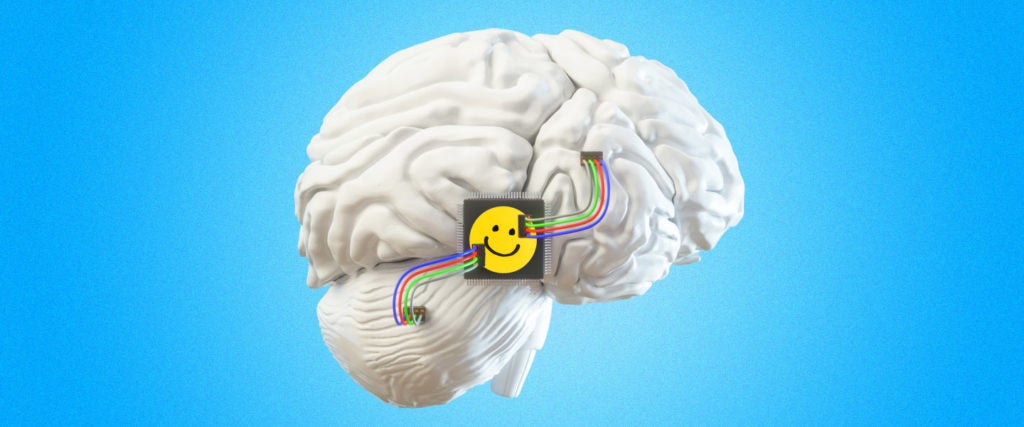Imagine a future where you can treat your depression, addiction and other mental health problems without therapy or medication, but instead by using tiny LED lights implanted in your brain to turn some brain cells on and others off, in order to make you feel better.
No, it’s not a sci-fi movie or a fucked-up rave, but an emerging field of neuroscience known as optogenetics. The technique was first developed as a potential way to cure blindness in 2004, but scientists later discovered optogenetics could be used to inhibit and excite a range of neurons, and possibly treat a variety of debilitating problems.
“Our final goal is to invent an innovative brain implant, which can be ultimately applied to the human brain to dissect neural circuits and treat psychiatric disorders such as addiction and depression and neurodegenerative diseases such as Parkinson’s and Alzheimer’s,” Choong Yeon Kim, a PhD candidate working with a team of researchers at the Korea Advanced Institute of Science and Technology (KAIST) to make optogenetics safe for humans in our lifetime, tells me.
Until recently, there had been a catch — based on the technology available now, the only way you’d be able to use optogenetics would be to stay plugged into a wall. “Neuroscientists traditionally have used ‘tethered’ optical fiber to deliver light for optogenetics, but this approach physically restricts the animals’ movement and increases brain tissue damage,” Kim explains (as if you weren’t depressed enough living life free-range). The technology was slightly improved in 2019 with the invention of a “wireless head-mounted implant neural device” but this wasn’t rechargeable, so it required periodic brain surgery, which again, would be a bummer for anyone already struggling.
However, in a new study published in Nature, Kim and his colleagues have figured out a way to introduce soft, wireless implants, approximately the size of a grain of rice and which can be recharged from outside the body using a smartphone. The way it works is, by using a small circuit that combines a “wireless energy harvester” with a coil antenna and Bluetooth low-energy chip, a magnetic field can harmlessly generate electricity inside the implant to recharge it. The devices were tested on rats that were injected with cocaine, and afterwards the blue light from the implants helped suppress the effects of the drug.
“The fact that we can control a specific behavior of animals, by delivering light stimulation into the brain just with a simple manipulation of a smartphone app, watching freely moving animals nearby, is very interesting and stimulates a lot of imagination,” study co-author Jeong-Hoon Kim, a professor of physiology at Yonsei University’s College of Medicine, said in a statement. “This technology will facilitate various avenues of brain research.”
Of course, we’re not rats and there are obviously safety concerns that come with the idea of decorating your brain with rice-sized lights. “Conventional implantable devices are made of rigid materials, thus can cause inflammation and tissue damage due to mechanical mismatch between the rigid devices and soft tissue,” Kim says, but the KAIST team’s “biocompatible ultrasoft silicone packaging” makes implants that much safer. With the exception of one small clinical trial to treat a rare eye disease (that has yet to release its results), optogenetics hasn’t been tested on humans and Kim acknowledges that we’re not quite there yet — but it could arrive in our lifetime.
“Further verification for safety of optogenetics is necessary prior to human applications,” he says. “Once this issue is solved, we believe that brain implants like this can open up new avenues for the treatment of various brain diseases.”
Until then, we’re going to have to teach all those coked-up rats how to use smartphones.

